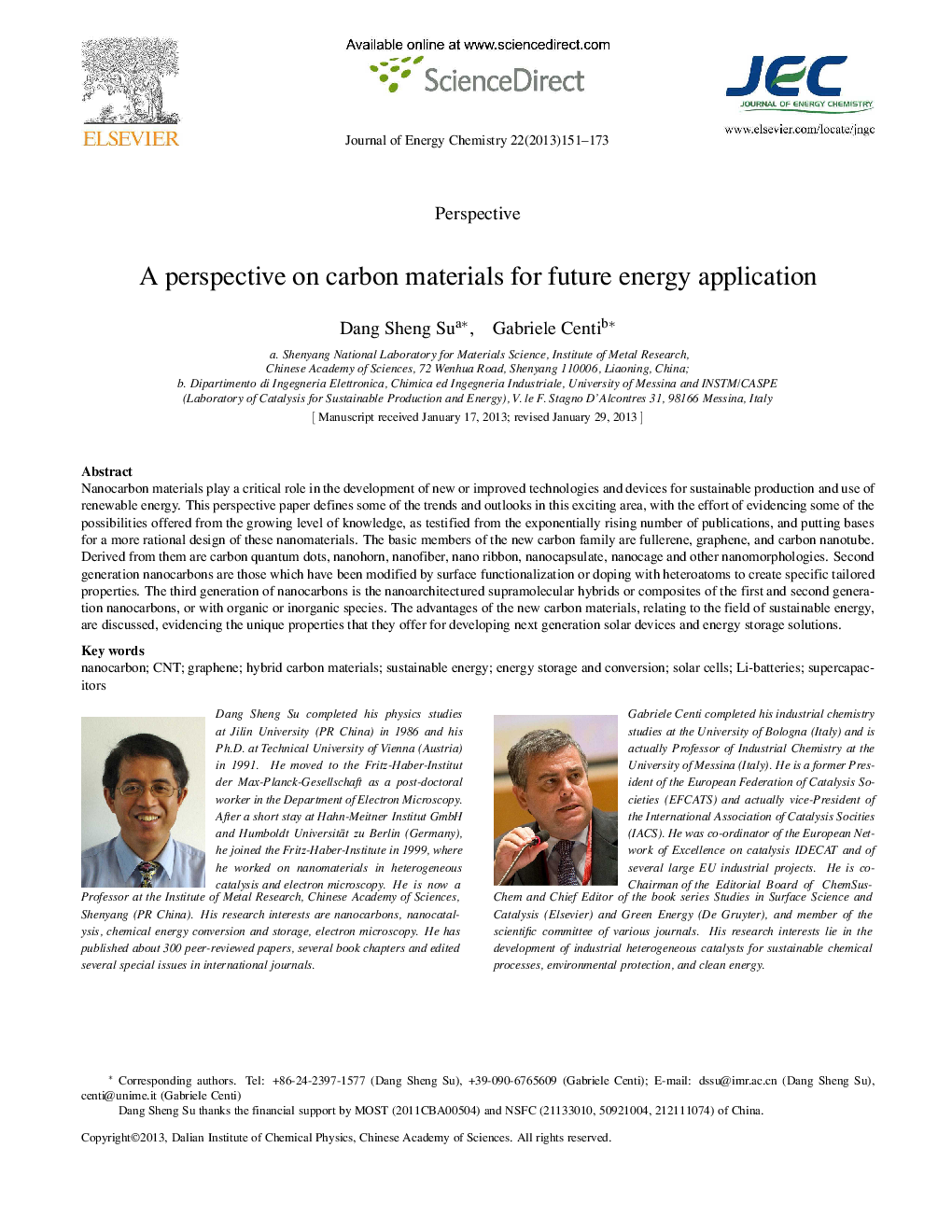| Article ID | Journal | Published Year | Pages | File Type |
|---|---|---|---|---|
| 63990 | Journal of Energy Chemistry | 2013 | 23 Pages |
Nanocarbon materials play a critical role in the development of new or improved technologies and devices for sustainable production and use of renewable energy. This perspective paper defines some of the trends and outlooks in this exciting area, with the effort of evidencing some of the possibilities offered from the growing level of knowledge, as testified from the exponentially rising number of publications, and putting bases for a more rational design of these nanomaterials. The basic members of the new carbon family are fullerene, graphene, and carbon nanotube. Derived from them are carbon quantum dots, nanohorn, nanofiber, nano ribbon, nanocapsulate, nanocage and other nanomorphologies. Second generation nanocarbons are those which have been modified by surface functionalization or doping with heteroatoms to create specific tailored properties. The third generation of nanocarbons is the nanoarchitectured supramolecular hybrids or composites of the first and second generation nanocarbons, or with organic or inorganic species. The advantages of the new carbon materials, relating to the field of sustainable energy, are discussed, evidencing the unique properties that they offer for developing next generation solar devices and energy storage solutions.
